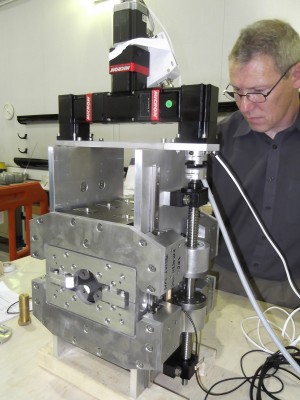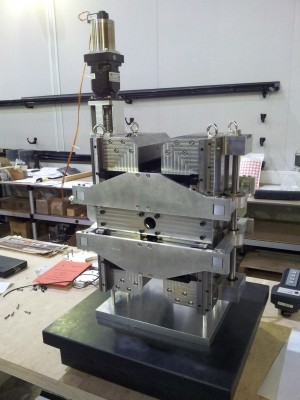

Permanent-magnet prototypes in a workshop at Daresbury Lab. Images: STFC
Scientific workshops don’t really need ice breakers, but the CLIC workshop, held from 18 to 22 January at CERN in Geneva, Switzerland, had one nevertheless. Coinciding with the first day of the workshop, CERN’s new Director-General Fabiola Gianotti gave her inaugural address to the lab, presenting CERN’s high-energy physics plans for the coming years and reminding everyone that both CLIC and the Future Circular Colliders study are part of CERN’s high-priority research and development programme in preparation for the next European Strategy exercise 2019/20. “It was a real shot in the arm for the community,” says Phil Burrows, CLIC Accelerator Collaboration Spokesman. “It’s good to hear what you work on being referred to as a high-priority project.”
CLIC is an ambitious project with a target collision energy of 3 Tera-electronvolts and an accelerating gradient – the measure of how quickly particles gain that energy – of 100 Megavolts per metre. This is 20 times higher than that used in LHC and some three times higher than the designated gradient of the ILC. The particles are pushed along by a drive beam that transfers its energy to the main beam at regular (and very precise) intervals. A feed-forward system will make sure that the drive beam and main beam are perfectly synchronised so that the main beam gets the best push possible. A prototype of this system delivered its first results at CTF3 late in 2015. “It almost meets our design specifications of 50-femtosecond precision,” says Burrows. “This is four times better than achieved in our first tests in 2014.”
Ambitious projects often consume a lot of power. A team from STFC’s Daresbury Lab and CERN are working a solution to reduce CLIC’S power bill by replacing power-hungry electromagnets with permanent ones – magnets unplugged, so to speak. In order to focus and bundle the particle beams, the Conceptual Design Report foresees tens of thousands of electromagnets along the beamlines. These include about 42,000 quadrupoles for the drive beam. Because they are tuneable these permanent magnets would fulfil CLIC’s high-precision requirements: they can be adjusted precisely to correctly focus the drive beam as it loses energy by fulfilling its mission of powering the main beam. . The team has already produced successful prototypes of the drive-beam quadrupoles and is currently looking at several different options for permanent magnets for other parts of the beamline complex. For further details see Jim Clarke’s plenary talk.
The CLIC accelerator experts are in the process of developing and testing new structures to reach the required high accelerating gradients as reliably and as cheaply as possible. One new design originates from SLAC National Lab in the US. It incorporates a simplified production procedure, with cavities coming in two halves, which could potentially make them cheaper and easier to produce in industry. For more details see Walter Wuensch’s plenary talk.

Recent Comments